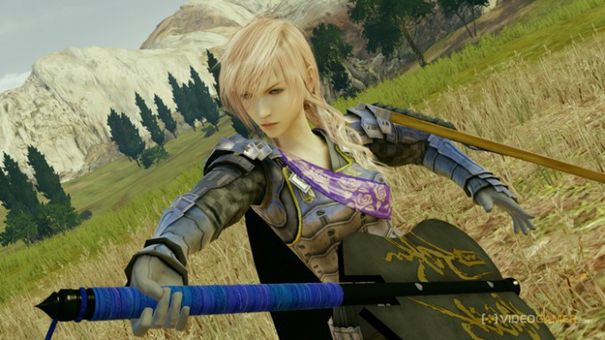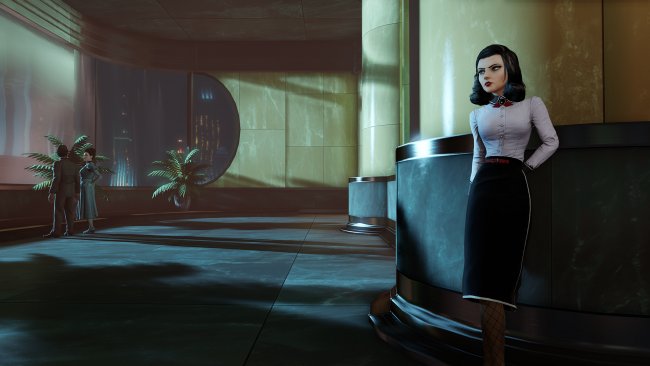

With WildStar, Carbine Studios - which is led by former Blizzard Entertainment developers - decided to "do [World of Warcraft] right this time." The jury's still out on if Carbine has succeeded, but they've certainly created a very complex MMO. Here's a small guide to get you started on picking your class, understanding all those weird stats, and a few other things you might need to know.
Let's start with the classes. Each class can fulfill one of two roles in the MMO Holy Trinity: Tank, DPS (damage per second, also known as the damage dealer), or Healer. Every class can be either DPS or one of the two remaining roles. If you've had experience with other MMOs, you know which role you prefer already. For MMO neophytes, the Tank is the one that stands up front and soaks up all the attention and damage coming from mobs, the Healer shields and regenerates the party's health, and the DPS does as much damage as possible.
Below each class description, I've also included their attribute priorities. These are the stats you want to focus on depending on which role you're fulfilling and are a subset of the game's base stats: Brutality, Finesse, Moxie, Tech, Insight and Grit. There's actually more to the stat system, involving attribute allocation during leveling and something called Milestones, but that's for a more advanced guide. Here's how attribute priorities will be listed:
Attribute Priorities
Melee | Tank, DPS
The Warrior in Wildstar is similar to warriors in other MMOs. This class wields huge Power Swords and equips Heavy Armor. Their primary energy resource is Kinetic Energy, which builds up as you use abilities and decays outside of combat. This is the class you play if you want to wade into battle at melee range, swinging a huge sword to hurt your foes or protect your friends.
Attribute Priorities
Melee | Tank, DPS
No, not that kind of Stalker. WildStar's Stalker is the Rogue class, dealing in all the sneaknasty action you'd expect from that MMO staple. The Stalker gets special Wolverine-style Claws and wears Medium Armor to keep things quiet while still protecting squishy things like organs. Its energy resource is Suit Power, which starts off full, diminishes when you use abilities, and regenerates over time.
You'll notice the Stalker is listed as a Tank; unlike the Warrior, who stands defiantly in the face of overwhelming damage, the Stalker is an evasion tank. That means they keep the enemy's attention and survive by dodging incoming damage instead of soaking it up. Stalkers also get a stealth move. Yeah, a tank that can stealth. Awesome, right? If you're into all things Rogue-like - not this kind of "roguelike" - Stalker is your class.
Attribute Priorities
Ranged | Tank, DPS
The Engineer is unique, as it's a pet class that can tank. The Engineer on its own attacks from a ranged position, but it can also summon robot companions to tank and attack. It requires a bit more battlefield perspective than the Warrior, but it's worth it in the end. The Engineer also wears Heavy Armor, wields big Rifles, and its primary resource is Volatility, which is generated by specific abilities like Pulse Blast. If you want to command a robot army, dealing damage and tanking from far away, this is your class.
Attribute Priorities
Mid-Range | Healer, DPS
Despite the name, the Medic isn't just your standard Healer. The class can heal friends and damage foes from mid-range: not quite in the thick of things, but not far away either. The Medic equips Medium Armor for survival and has fist-wielded Resonators as its primary weapon. This is also the first class in this guide that actually has two different energy resources. It draws on four Actuator Cores that start full and regenerate to deal damage, while healing requires Focus, a healer-shared resource that begins full and recharges at a rate based on one of your stats. The Actuator system requires you to use certain skills to pump up your Cores, and others to dump (read: use) them. It's a bit more complex than the other healers.
The Medic is meant to be a hybrid, as the Resonators can actually heal and damage at the same time. It uses fields and probes to set up healing or damage zones on the battlefield, making the class great for group healing. If you're a healer looking for a challenge and a bit of damage on the side, you should try the Medic.
Attribute Priorities
Ranged | Healer, DPS
The light armor-wearing Spellslinger dual-wields pistols, shooting allies and enemies from the back of the battlefield. For this class, it's all about staying away from combat. Spellslingers use two different energy resources, one of which is the healer-based Focus, which starts full and recharges. The second is Spell Power, a resource that works with the innate power Spellsurge. While Spellsurge is active, a Spellslinger's damage and heals are vastly increased, meaning managing your Spellsurge is very important.
Otherwise, Spellslingers are all about movement. They shoot from afar, using teleport and Spatial Shift to remain out of the line of fire. If you want to be a gun-toting healing ninja, Spellslinger is WildStar's gift to you.
Attribute Priorities
Ranged | Healer, DPS
The Esper is the most familiar healing class in WildStar. It uses telekinesis and illusions to deal damage and soothe wounds. Espers are clothed in Light Armor and use the chakram-style Psy Blades as their weapon. They have more targeted heals and debuffs than the rest of the healing classes, via Dreams and Nightmares. Like other healers, they use Focus, but they also have their own mechanic, Psi Points. This resource starts from zero and is generated by using abilities in combat. It works vaguely like the Medic's Actuators, but starts empty, meaning the Esper starts off fights weaker than a Medic and grows in power over time.
Compared to the Spellslinger, Espers are far less mobile. The class starting ability, Telekinetic Strike, cannot be used while moving. That said, Espers are still high in demand because they map rather closely to healers in existing MMOs. If you want to heal, but don't want to walk on the wild side, try the Esper.
Attribute Priorities
So while those six stats - Brutality, Finesse, Moxie, Tech, Insight and Grit for those who were paying attention - are pretty simple, they do something different for every class. Here's wonderful visual representation of what stats effect what from the fine folks at French WildStar site, WildStar Echoes.
But what does "Strikethrough" mean anyways? Here's a list of what all the different terms on your character sheet mean.
Before I let you go, there's one fairly important thing you need to learn about WildStar. Its combat system is based on telegraphs: when players or enemies use certain moves, the area of effect will be shown on the ground. Telegraphs come in different colors depending on their effect on you:
These telegraphs will even show you when an attack is coming by filling up with their specific color; once the telegraph is full, the attack goes off. The telegraph system is the foundation of everything in WildStar, and while most players understand that, they frequently miss the robust interrupt system.
See, every class has abilities that stun opponents or interrupt their attacks. If you use these abilities while an enemy's telegraph is still charging, you'll create what called a Moment of Opportunity. During this time, an opponent's lifebar will turn purple and a timer will appear. Any attack you do in a Moment of Opportunity will have bonus damage, so you want to save your strongest abilities for then.
Interrupt Armor seeks you prevent you from using these Moments of Opportunity. On the left of certain enemies and bosses, you'll see a number enclosed within a blue circle. This is how much Interrupt Armor they have. When you use an interrupt or stun on these mobs, that number will lower by one each time. If it drops to zero the icon will change to a red broken shield, meaning they can be stunned, interrupted, or knocked-back. Sometimes, you won't be able to get through Interrupt Armor on your own as the armor repairs after a few seconds. This means you'll need to work in tandem with others to win.
Bosses and high-level mobs will also occasionally become un-interruptable, as represented by a golden shield icon. You can do anything to get through this, you just have to wait until it goes away.
Mastering telegraphs, interrupts, and interrupt armor is your first step to becoming a high-level WildStar player, so get out there and practice!



